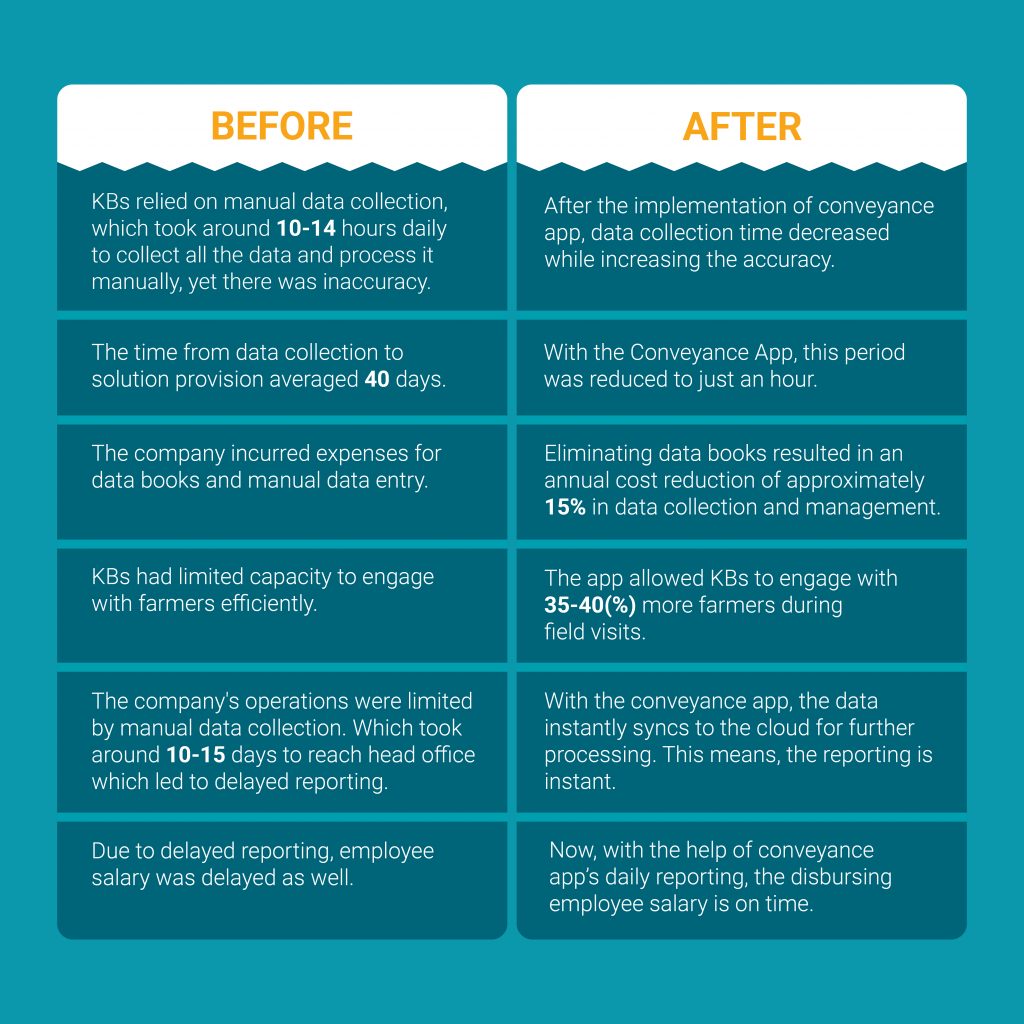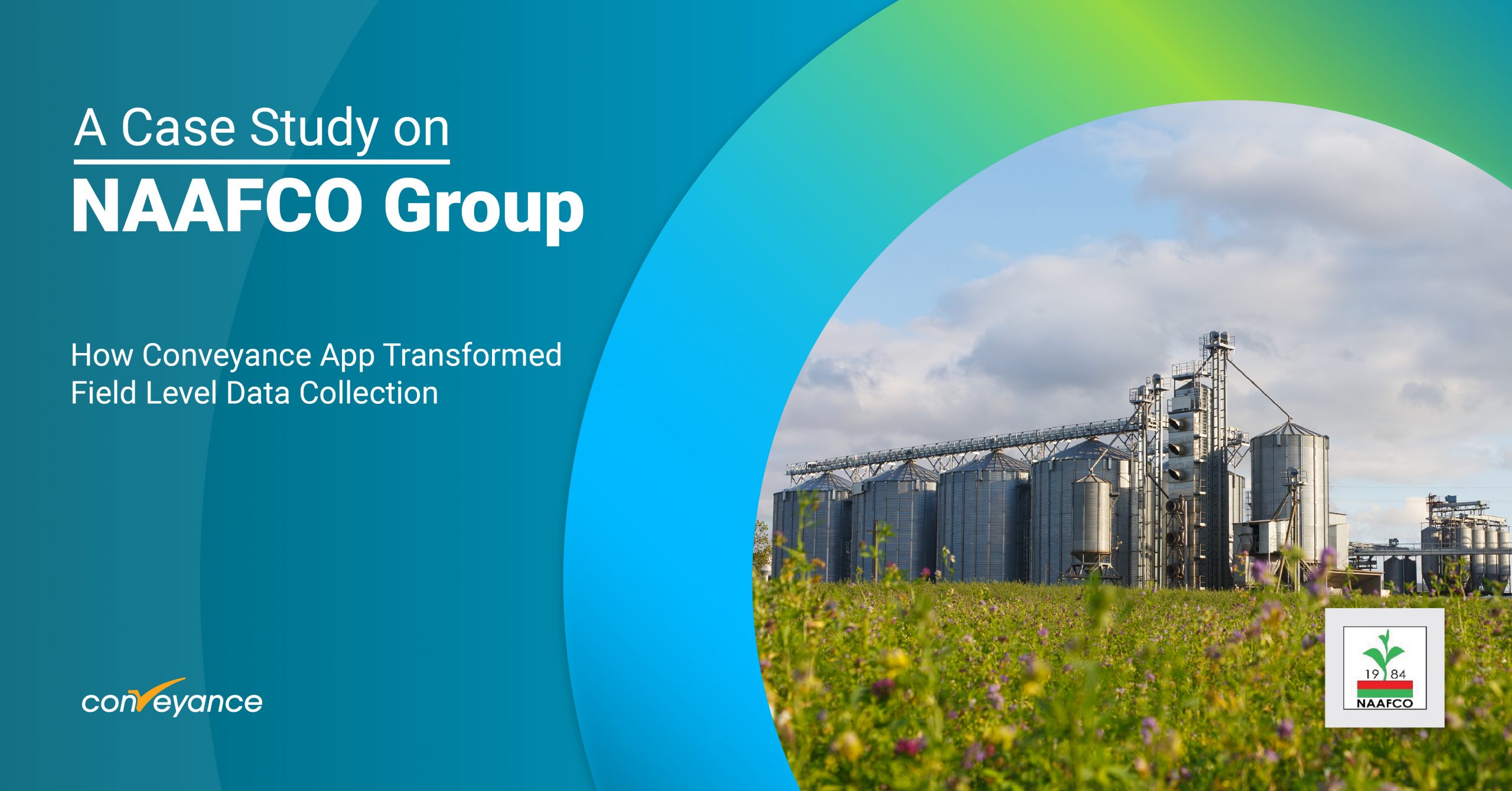A Case Study on NAAFCO Group
Abstract
In the ever-evolving landscape of agrochemicals and pesticide distribution, the need for efficient data collection and reporting is paramount. This case study delves into the transformative journey of Naafco, a pioneering agrochemical company in Bangladesh. Faced with challenges of time-consuming data collection and delayed reporting, Naafco sought a solution that would empower its field employees and streamline operations. Their choice? The Conveyance App, a versatile tool that would forever alter the way Naafco conducted business.
Introduction
Bangladesh’s agricultural sector is the backbone of its economy, with countless agrochemical companies contributing to its growth. Among these, Naafco stands as a shining example, serving farmers and agricultural communities with pesticides and invaluable expertise. However, as the demand for agrochemical products soared and the company expanded its operations throughout the country, Naafco encountered a persistent challenge that needed an innovative solution: the efficient collection and reporting of critical data from the field.
For years, Naafco’s sales representatives, the “Krishok Bondhu” or KBs embarked on a crucial mission to interact with farmers, understand their needs, and gather essential data for analysis. This data included vital details such as farmers’ names, ages, their farming practices, and the challenges they faced. Armed with this information, Naafco aimed to offer personalized solutions, ensuring that the right pesticides and expert advice reached those who needed it the most.
However, a manual data collection process weighed down Naafco’s operations. Each interaction with a farmer translated into time-consuming paperwork, data books filled with valuable insights but bound by the limitations of being paper-based. These books journeyed to Naafco’s head office, located remotely, where the data underwent analysis and the suggested solutions were crafted.
Yet, the time lag between data collection and analysis proved to be a hurdle that often led to delayed solutions for the farmers, where time was of the essence. Moreover, the cost of printing these data collection books was another issue, as they had to be reprinted for each new cycle of data gathering.
Naafco recognized that a change was imperative. It sought a modern, efficient, and cost-effective solution that would not only simplify data collection but also enable real-time access and analysis, thus ensuring timely solutions for farmers. Their quest for such a solution led them to the Conveyance App.
Challenges of Naafco in Data Collection
To truly understand the significance of Naafco’s transition to the Conveyance App, we must dive deeper into the challenges they faced. As an agrochemical company that operates throughout Bangladesh, Naafco’s field employees, known as “Krishok Bondhu” or KB, played a pivotal role in bridging the gap between the company and the farmers they served. Their mission was not merely to distribute pesticides but to establish meaningful connections with the farming community, identify their needs, and provide tailor-made solutions.
However, the process of data collection proved to be a formidable challenge. Each KB’s journey involved gathering critical information about the farmers, their farming practices, and the specific challenges they encountered. This data was invaluable, as it informed Naafco’s recommendations for the right pesticides and expert advice. But the existing method of manual data collection had severe limitations.
1. Time-Consuming Data Entry
The manual data collection process, which relied on handwritten notes and physical data books, was undeniably time-consuming. Each interaction with a farmer translated into precious time spent on paperwork rather than engaging with more farmers or focusing on core responsibilities.
2. Delayed Reporting and Solutions
Another major challenge Naafco faced was the delay in reporting and providing solutions to the farmers. The data collected during field visits had to make a physical journey to the company’s head office, often located far away. It was at this central hub that the data underwent analysis and the suggested solutions were carefully crafted. The problem, however, lay in the time gap between data collection and analysis. Farmers often required immediate remedies to address pest infestations or optimize their farming practices. Waiting for data analysis and solutions meant that precious time was lost, and the effectiveness of Naafco’s support was compromised.
3. Cost-Intensive Data Books
The challenge wasn’t just confined to time but extended to financial implications. Printing the data collection books for each cycle of data gathering incurred significant expenses for Naafco. These costs included printing, distribution, and the management of physical records. Moreover, the process was not environmentally sustainable, adding another layer of concern for a company that values eco-conscious operations.
Recognizing the need for a paradigm shift, Naafco turned to the Conveyance App to address these challenges comprehensively.
The Conveyance App: A Game-Changer
Naafco’s decision to implement the Conveyance App marked a pivotal moment in the company’s journey. The Conveyance App offered a suite of features that held the potential to revolutionize the data collection and reporting process. The key elements that redefined Naafco’s operations included:
- Custom Form Features
One of the standout features of the Conveyance App was its ability to create custom forms for data collection. This empowerment allowed Naafco to tailor data collection to its specific needs. The KBs could now capture the precise information required, ensuring that each interaction with a farmer was not just a qualitative experience but a quantitative one as well.
- Instant Cloud-Based Storage
One of the most transformative aspects of the Conveyance App was its integration with cloud-based storage. As KBs inputted data into the app during their field visits, the information was instantly stored in the cloud. This meant that there was no longer a need for physical data books and the decision-makers at Naafco’s central hub had instant access to the collected data. The KBs’ reports were no longer subject to postal delays or manual data entry processes. The information was readily available for analysis and decision-making, which was instrumental in providing timely solutions to the farmers.
- Cost Efficiency
Perhaps one of the most impactful changes brought about by the Conveyance App was its impact on cost efficiency. The elimination of data books meant that Naafco no longer had to allocate significant resources to printing and distributing physical records. The cost savings directly translated into a more financially sustainable operation.
In essence, the Conveyance App didn’t just offer a solution to Naafco’s challenges; it presented a comprehensive transformation of the way the company operated in the field.
Transforming Operations and Empowering Farmers
Through the Conveyance App’s integration, Naafco experienced a pivotal shift that touched every aspect of its operations, significantly benefiting the farmers they serve.
This digital transformation ushered in unparalleled operational efficiency, eliminating manual data collection constraints and empowering KBs to offer real-time, precise solutions to farming challenges. Not only did this transition to cloud-based storage reflect Naafco’s commitment to sustainability and result in notable cost savings, but it also paved the way for scalability, anticipating the company’s future growth.
At the heart of this transformation, farmers stood as the prime beneficiaries, receiving timely expert advice and optimal pesticides, reinforcing Naafco’s dedication to uplifting the agricultural community.
Measurable Impact: A Before-After Comparison
To provide a comprehensive view of the transformation brought about by the Conveyance App, we’ll present a before-after comparison of key metrics at Naafco:
Operational Efficiency:

This before-after comparison emphasizes the significant improvements brought about by the Conveyance App, underlining its transformative impact on Naafco’s operations and the agricultural communities it serves.
Key Takeaways and Recommendations
The Naafco case study offers several key takeaways that can be valuable for companies operating in similar domains:
1. Embrace Technological Solutions: The transition from manual data collection to digital platforms can significantly enhance operational efficiency, and contribute to sustainability.
2. Timeliness Matters: In the agricultural sector, timely solutions can make a substantial difference. Providing real-time support to farmers can empower them and elevate their livelihoods.
3. Cost Savings with Sustainability: Reducing costs through digital solutions not only improves the financial bottom line but also demonstrates a commitment to environmental sustainability.
4. Scalability for Growth: The ability to scale operations efficiently is crucial for companies looking to expand their outreach and make a more significant impact in their industry.
Conclusion
The Naafco case study exemplifies how embracing technological solutions can catalyze positive transformation within a company and its community. The Conveyance App’s implementation shifted Naafco’s data collection process from time-consuming and paper-based to streamlined, efficient, and sustainable. Key takeaways from this journey underscore the importance of technology in enhancing operational efficiency, providing timely solutions, reducing costs, and facilitating scalable growth.
By prioritizing technological integration, real-time customer support, sustainability, and scalability planning, companies can not only improve their bottom line but also positively impact the lives of the communities they serve.
The Naafco case study stands as a testament to the power of innovation in the realm of data collection and its potential to drive positive change in the agricultural sector and beyond.


